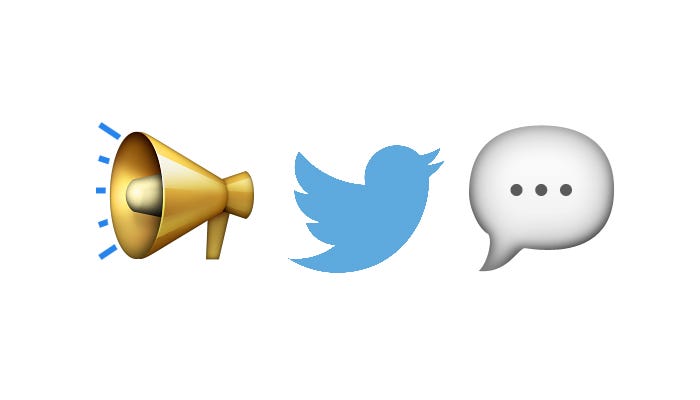Goodbye .@, Hello Messaging?
A single-character change highlights a massive strategic decision

When I first started using Twitter, I’d start my tweets with the names of other users. I wanted to give them credit for their ideas. I later discovered very few people even saw my tweets because of how they were composed. It was frustrating (and a little embarrassing) to learn I didn’t know how to use the service.
I suspect many new users are drifting through Twitter in this same boat of confusion. Todd Sherman undoubtedly had this problem in mind when announcing they’ll be “simplifying the rules” in how tweets are distributed:
New Tweets that begin with a username will reach all your followers. (That means you’ll no longer have to use the ”.@” convention, which people currently use to broadcast Tweets broadly.)
The change resolves a conflict between two rules that govern how Twitter distributes our tweets. One rule is that new conversations should be broadcast to all your followers. That’s a simple rule. Another rule is that tweets that begin with usernames should be distributed to only those followers-in-common between the sender and the target recipient. That’s a pretty complicated rule!
Understandably, Twitter is embracing the simple broadcast rule and jettisoning the complex rule. It will make their product easier to use, particularly for new users.
At least initially.
But there’s a much deeper impact here. Twitter is also removing a feature, our ability to start a conversation targeted to smaller groups. With this change, Twitter is not only prioritizing simplicity, they’re prioritizing social media broadcasters.
There’s another group of Twitter users calling for changes that are geared to individuals and small groups. Robinson Meyer recommended more forms of private-ness on the site; I proposed a more precisetargeting of our tweets to the intended audience. Hilary Mason put it most succinctly:
You might be thinking this is much a-dot about nothing. Twitter isn’t signalling a strategic decision, they’re only making this one aspect of their product simpler.
However, any discussion of simplifying Twitter needs to consider the user experience in its entirety. With this change, we’ll be broadcasting our tweets more often. Broadcasting is based on our social connections. So with the increase in broadcast tweets, we’ll spend more time adjusting the accounts we’re following to keep them aligned with our interests.
I also speak from experience when I say this is a problem. The service my company runs on Twitter, Primal, is a power-user of replies, the more private form of tweets affected by this change. Over the last year, we’ve sent more than 220,000 replies to individuals.
Among the many aspects of Twitter we’ve analyzed (summarized in the report below), we learned that tweets that are distributed based on social connections are much more likely to prompt an unfollow than recommendations targeted to individuals.
People are asking for a more “personal Twitter” because “broadcast Twitter” can be a noisy and inconvenient place.
Whether you believe this single-character change highlights a strategic decision or simply the pursuit of simplicity, the impact remains the same: “broadcast Twitter” gets a little bigger and “personal Twitter” gets a little smaller.
Here, Twitter is swimming against the tide of social media. Messaging for individuals and small groups is on the rise. Individualized services, powered by bots and AI, are on the rise. Broadcasting is not.
Speaking for the silent majority of small groups, the introverts and the interest networkers, those that prefer not to shout, we need a “personal Twitter”.
Are announcements for improvements to “Personal Twitter” on the horizon?
